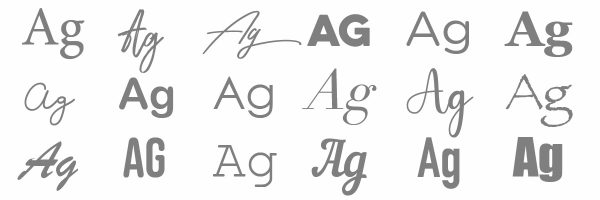When you go to design school you learn very quickly that you need to justify your design choices. You can’t just choose a font because it ‘looks cool’, probably because the tutors know that you’ll invariably look back and realise it wasn’t cool at all. Instead you’re taught to choose a font that represents the brand and appeals to the audience. Same goes for colours, image selection, and about a million other tiny choices the designer has to make when creating a layout.
So, it might seem odd to be asked to fill out a brief when you just want a quick flyer, but how else will the designer know whether to use Comic Sans or Helvetica?

A brief is essentially a document which outlines the design job and provides all the info a designer needs. While there might also be chats going on, the brief should be in a written document to make sure everyone is clear about the job before it starts (this helps estimate costs and can also prevent hair-pulling mistakes down the track). Writing everything down is a great way to start as it helps distil the important information. Ok, so you’re ready to start writing, but… er.. what exactly? Every designer or studio will have its own briefing template, but here’s five questions to get you started:
Think about the specific problem you’re trying to solve and be clear about what you’re hoping to get out of the project. Are you trying to get donations by posting something physical to your mailing list? Or trying to increase sales by encouraging people to repeat purchase? Did something happen to trigger the problem or identify an opportunity? In a perfect fantasy-design-world, what would the finished piece achieve?
A designer can’t figure out the best way to reach your audience unless they know who that audience is. Are they young or old, male or female, city-based or rural? What do they care about and how does your brand fit into their lives? Pictures of cats might get drools from one audience, and hate mail from another so it’s important you’re as specific about your audience as you can be.
If there’s such a thing as too much context in a brief, I’m yet to see it. There’s the practical info that’s useful to know, like ‘this report is produced every year’, or ‘people will only receive this email if they abandon their shopping cart’. And there’s bigger picture things that provide context, like your brand values, what your competitors are doing, or the history of your company.

Which bits are mandatory (eg must fit in a DL envelope) and which bits are flexible (eg could fold out to any size)? Think about if there are any budget, printing or other limitations that the design needs to work within. Remember that designers are problem solvers (some might say trouble-makers) and will look for opportunities within the limitations. So, saying something needs to be printed in one colour is not the same as saying it needs to be printed in black and white. For clarity it’s good to include the thinking behind the mandatories eg. must fit in a DL envelope to keep postage costs to a minimum.
If you have a supplier you’ll be using, get their mandatories too. Some printers need files set up in a particular way, or have their own die lines. Some digital platforms will have file size restrictions.
This is particularly relevant to photos, icons and illustrations, but might include logos, brand guidelines, fonts and text. Get all that stuff together so you can hand it over to your designer in one go (if you can).
If you’ve answered these five questions, you’ve pretty much written your brief. Congrats! For those high-achieving types that really want to craft the hell out of this brief, here’s my last couple of tips:
Your target audience might be specialist scientists, but when you’re writing a brief, assume you’re talking to someone with no prior knowledge. Try to explain things in simple terms like you would to a teenager and include definitions for any industry jargon. The better understanding the designer has, the better the design will be. And remember that your designer is not a potential investor (unless you have a particularly wealthy designer), so tell the personal stories not the sales pitch. I love that being a designer means I learn about all sorts of industries (super yachts, baby sleep, copyright law) and I want to understand what you’re so passionate about.
Including images similar to what you’re looking for can be helpful, particularly with branding. Explain what you think works well in your examples, like ‘the colours are really bold’, or ‘the photography feels clean and simple’. Having said that, sometimes it’s better to avoid the temptation to include images. This is particularly true of things like complex graphs, processes or infographics. If it’s difficult to show, your attempt might actually be giving the designer the wrong info. Try describing it using only words. Even if it takes two pages to write it all out, that’ll give your designer a clear and accurate starting point to then visualise in the way that will show it most clearly.
I know you’ve already answered the bigger picture question, but there’s probably even more context you can share. You may not be aware of it, but you have innate knowledge about your product, the industry and your audience. The more of this you can share with your designer, the better equipped they are to make a great design. I’m not saying all of this gets included in a design, but the best designs keep these things in mind. And sometimes inspiration comes from those ‘insignificant’ details that actually tell a powerful story.
I’m already getting excited thinking about all the amazing briefs getting written out there. If you have any questions about briefs or design, feel free to get in touch.
Milk & Whisky © 2022